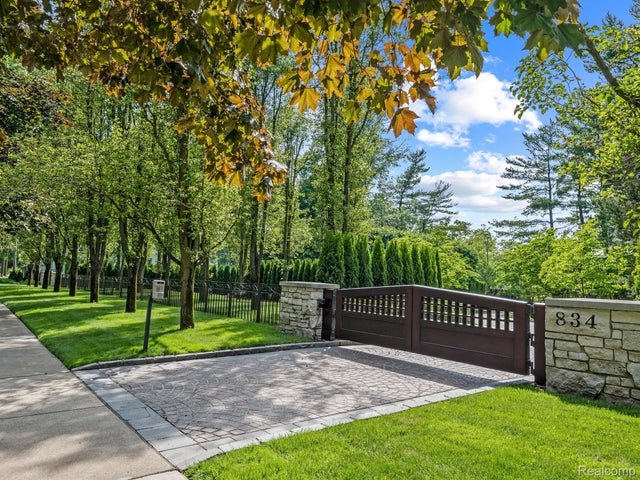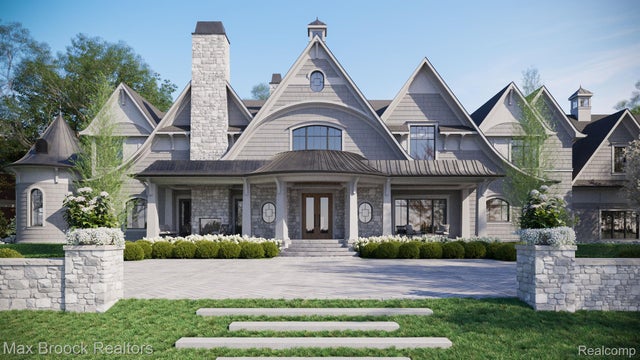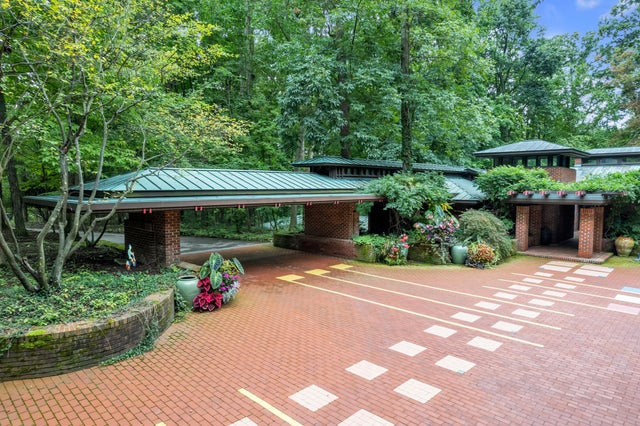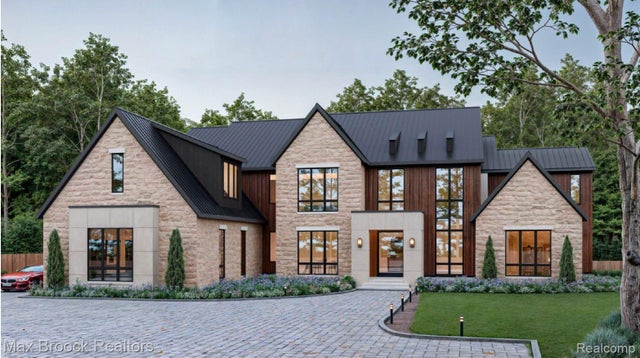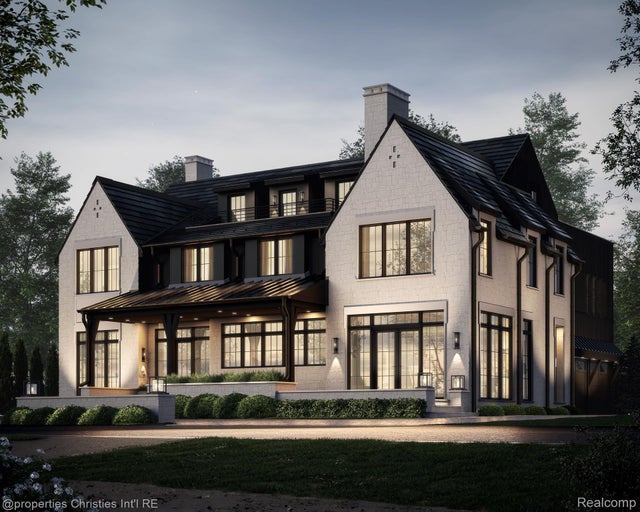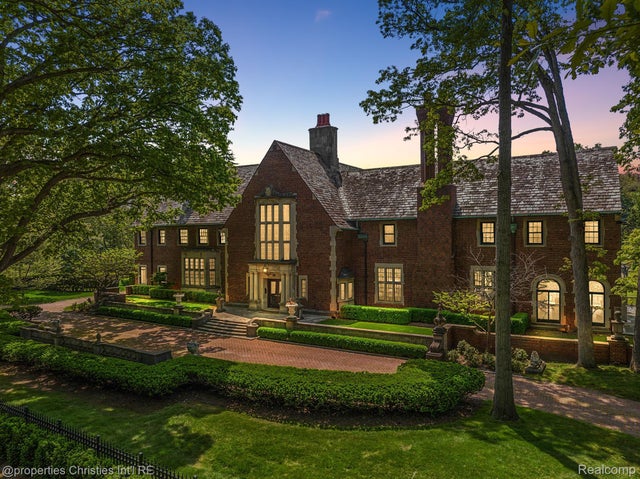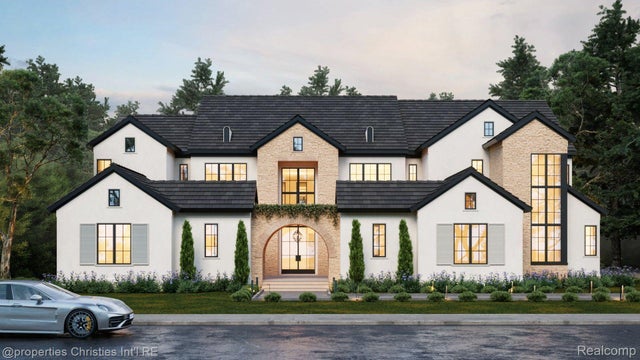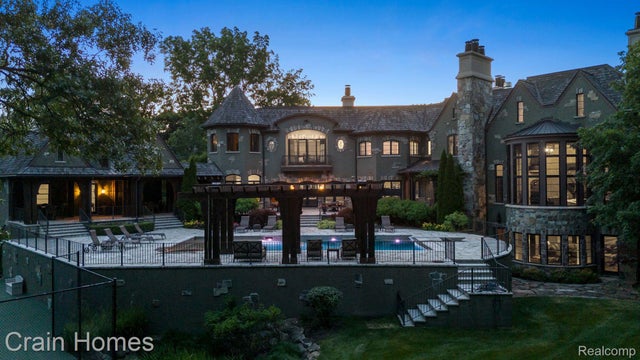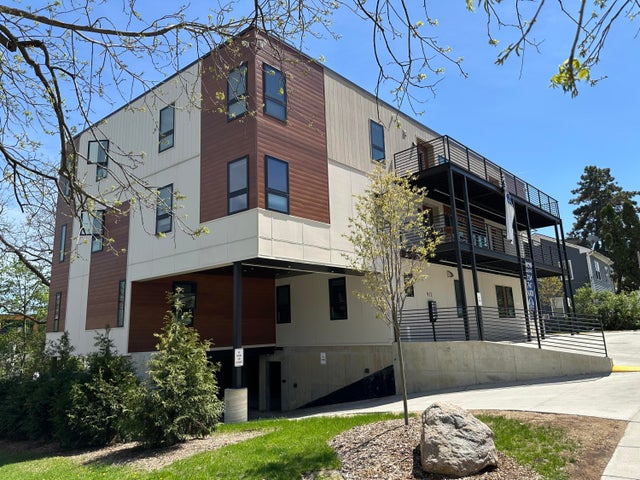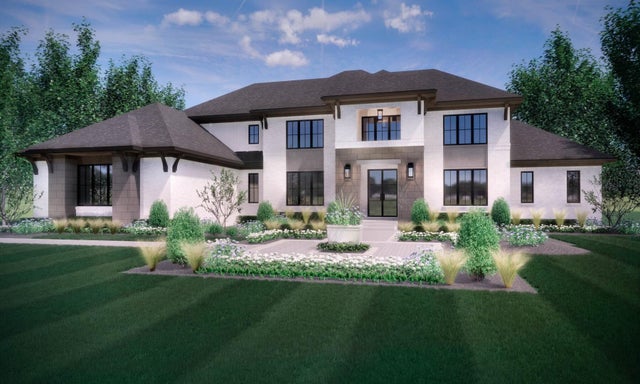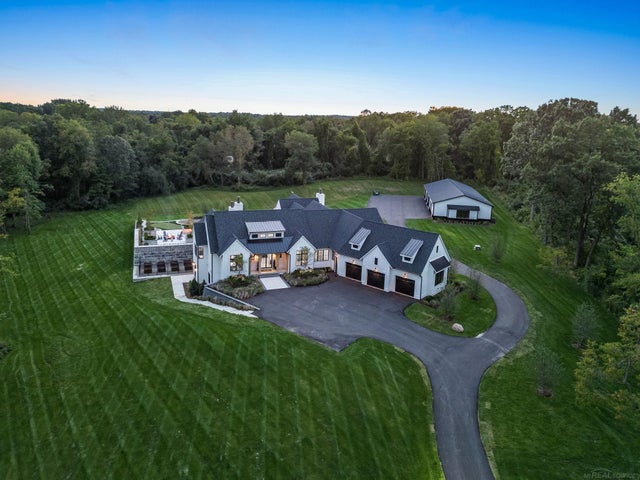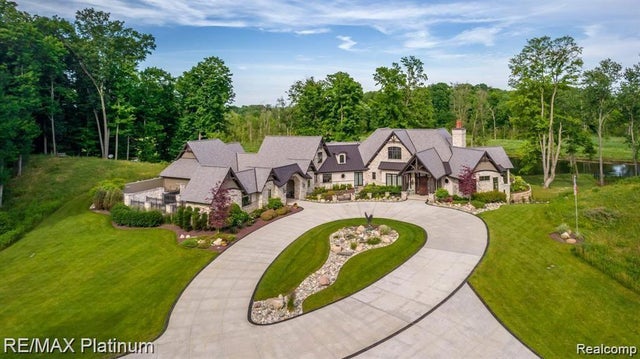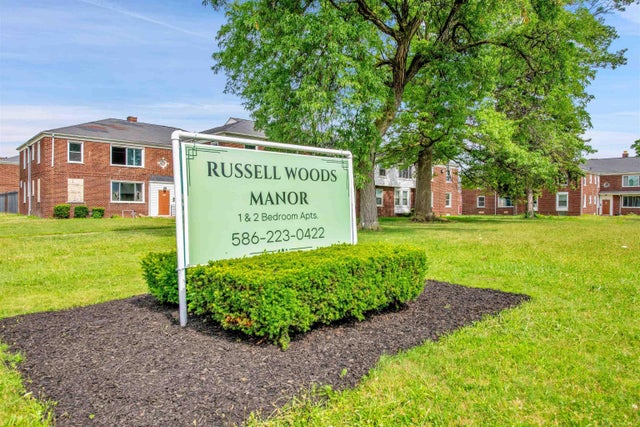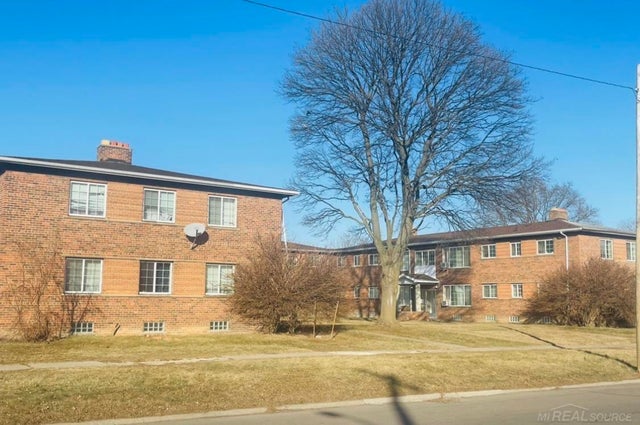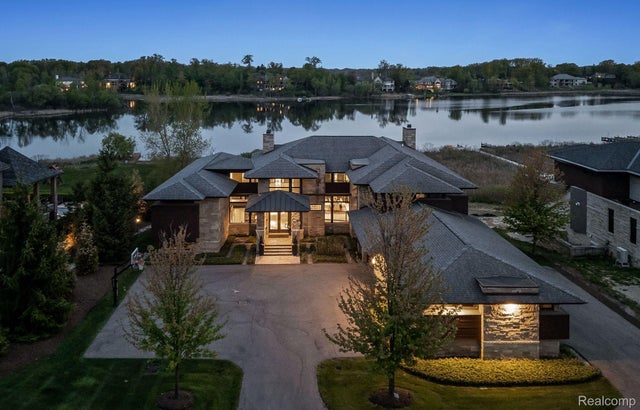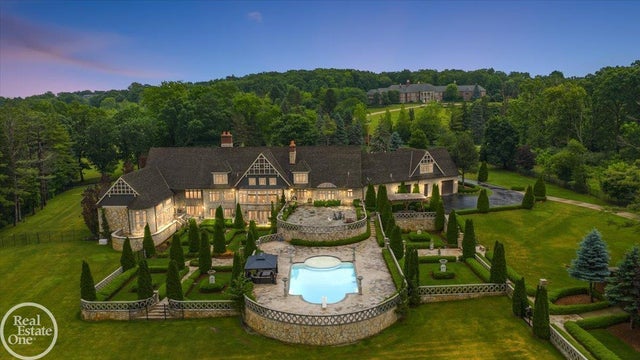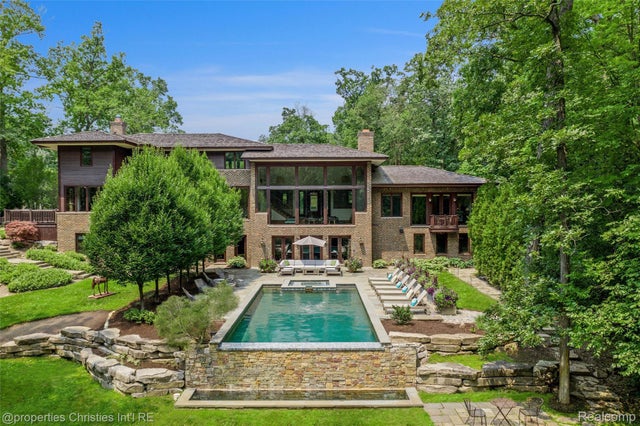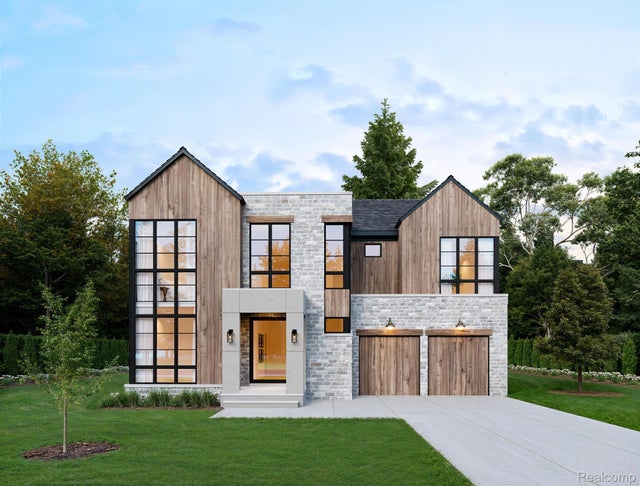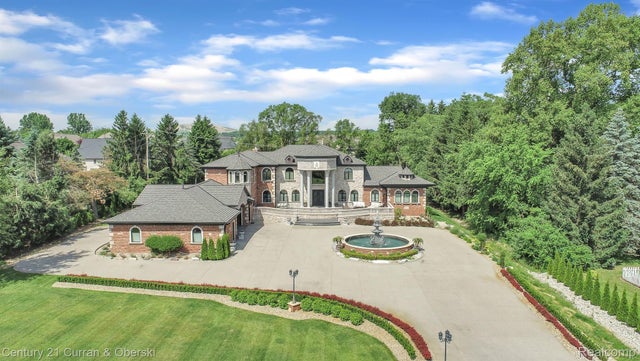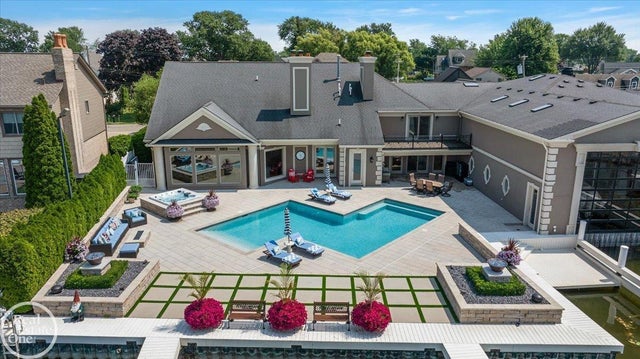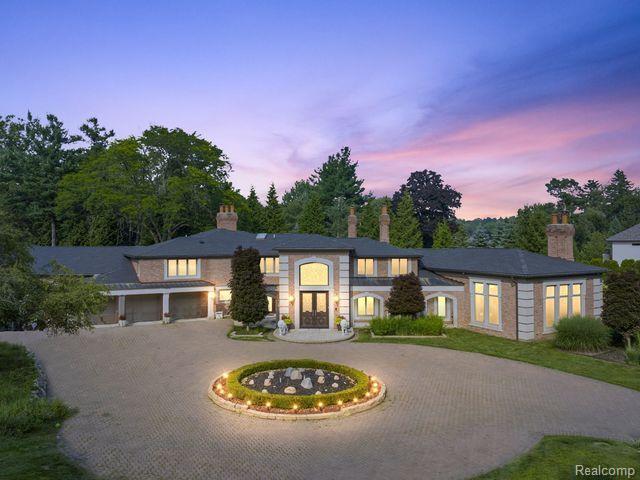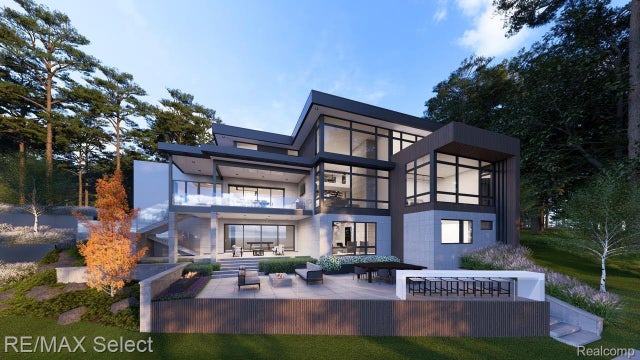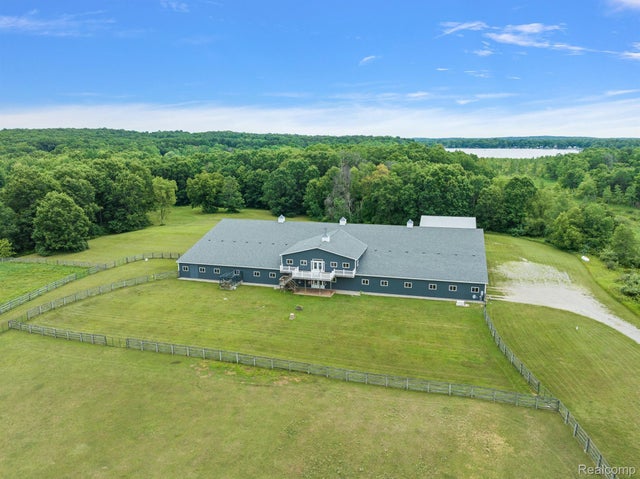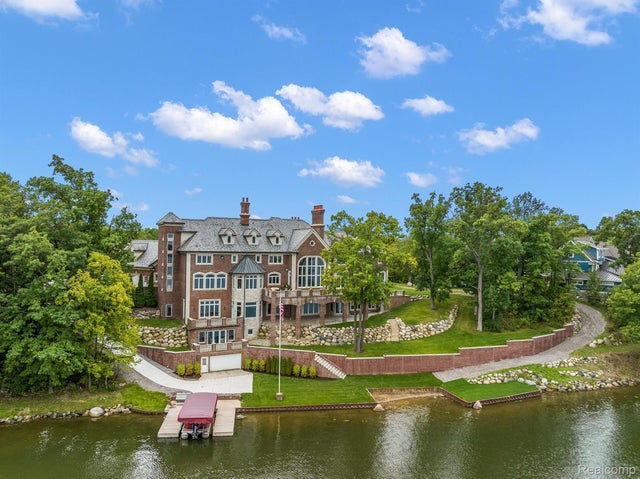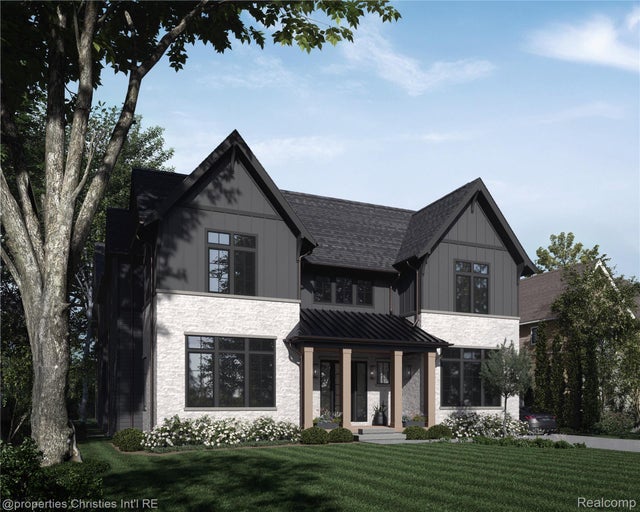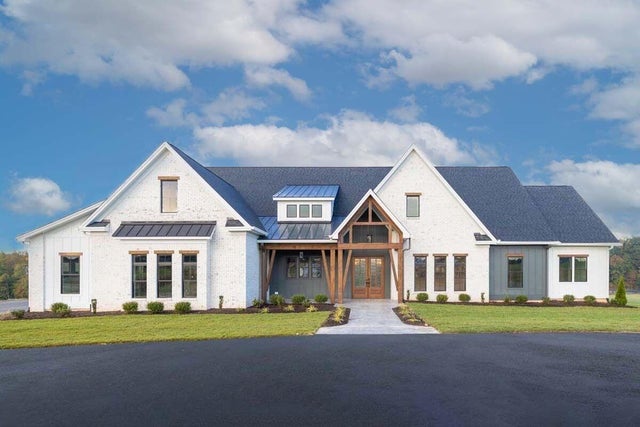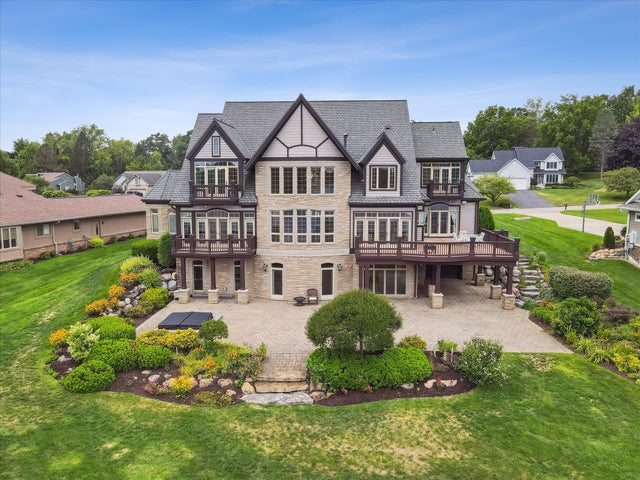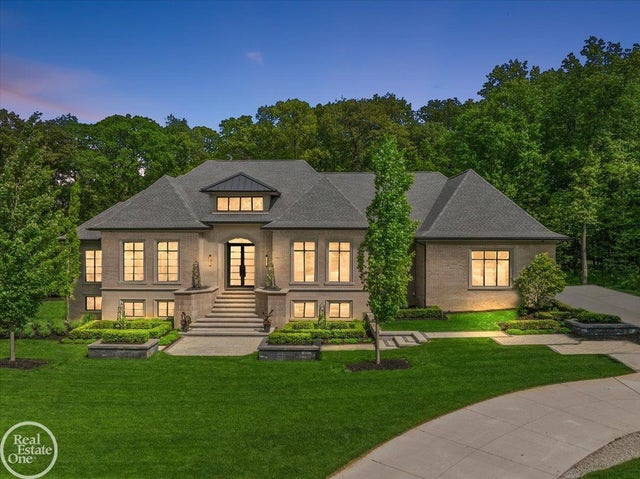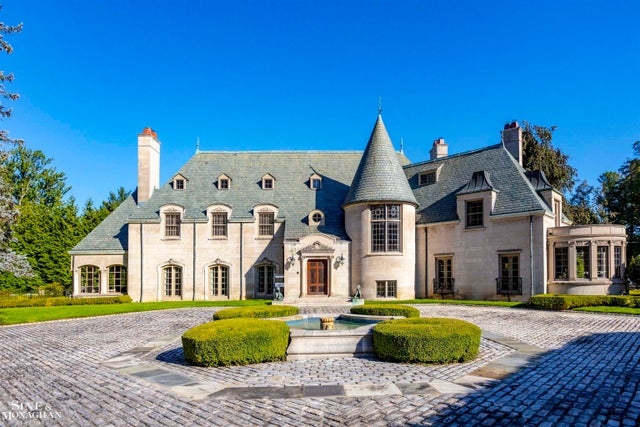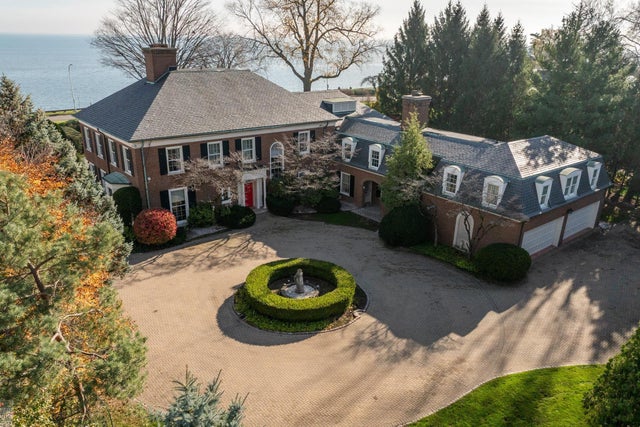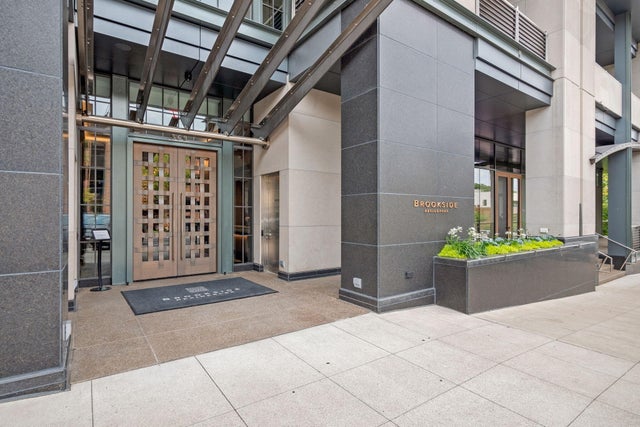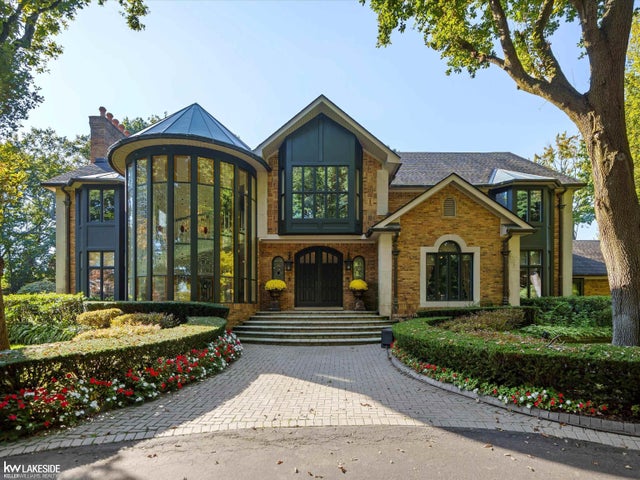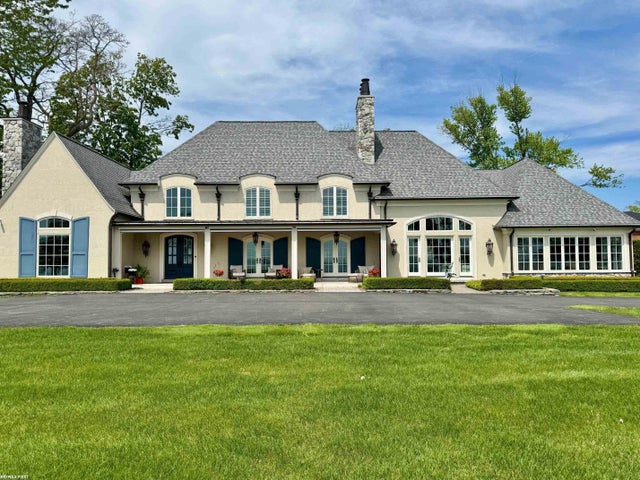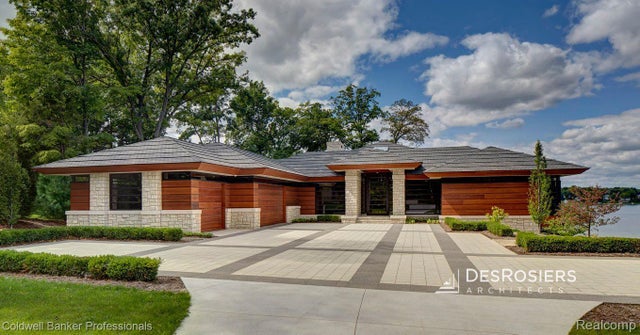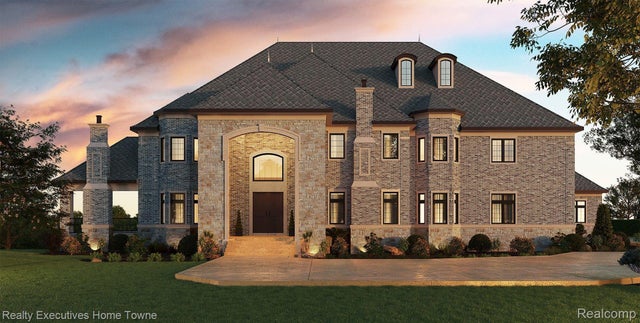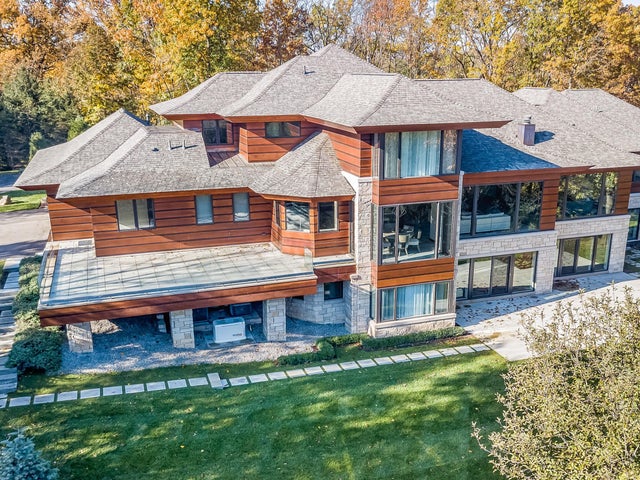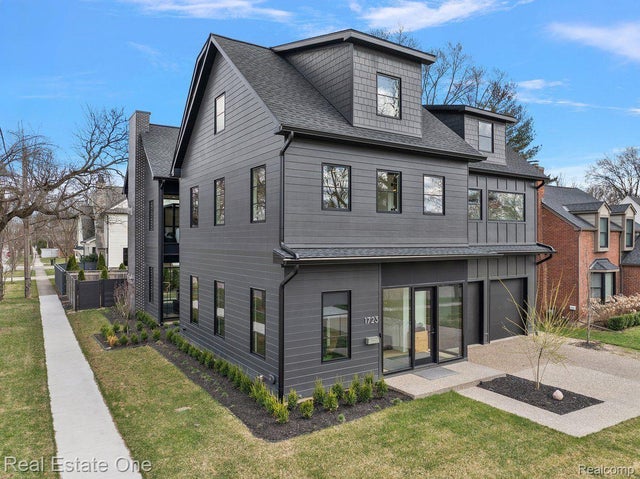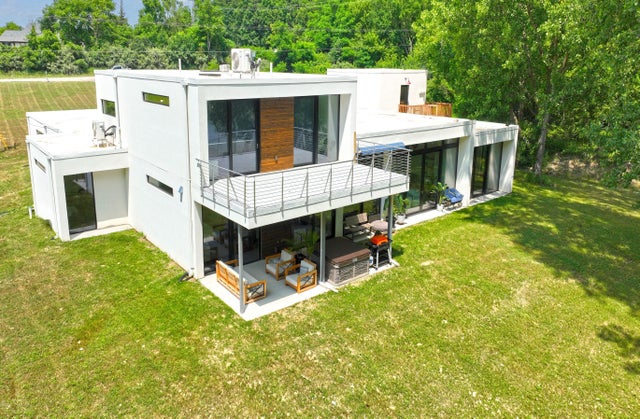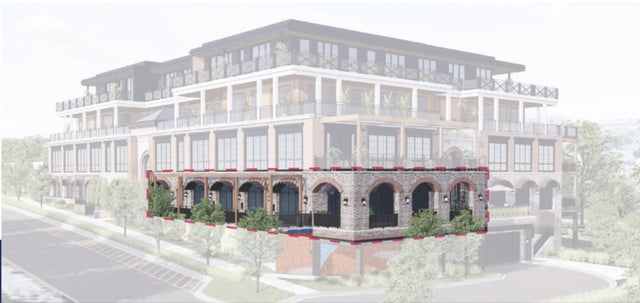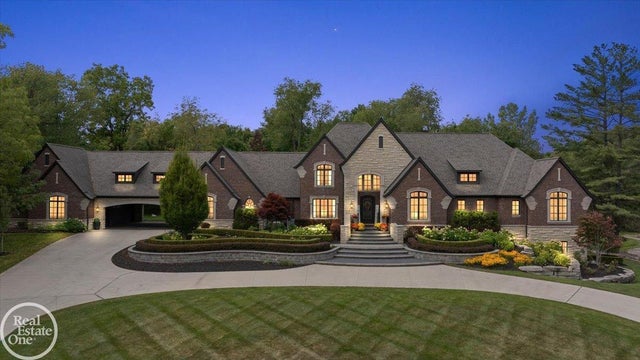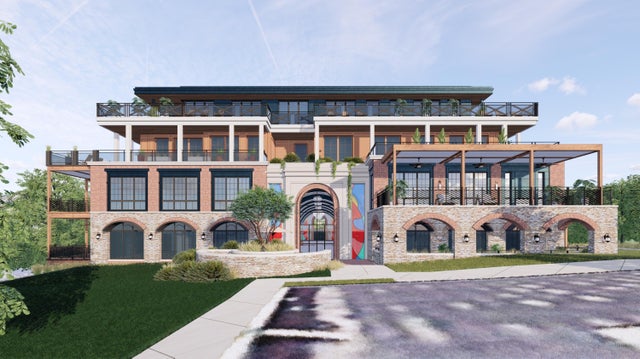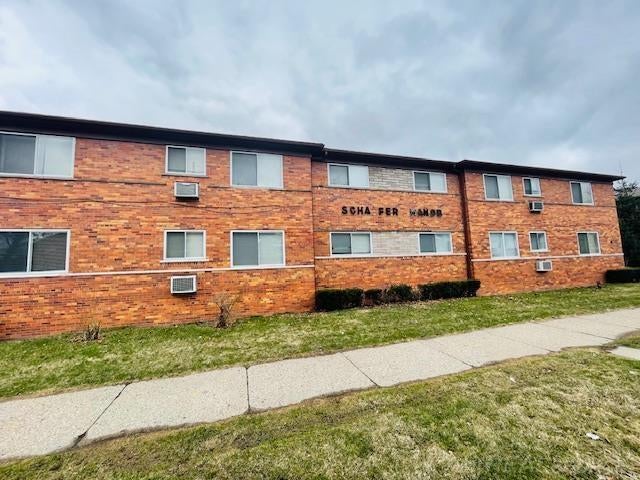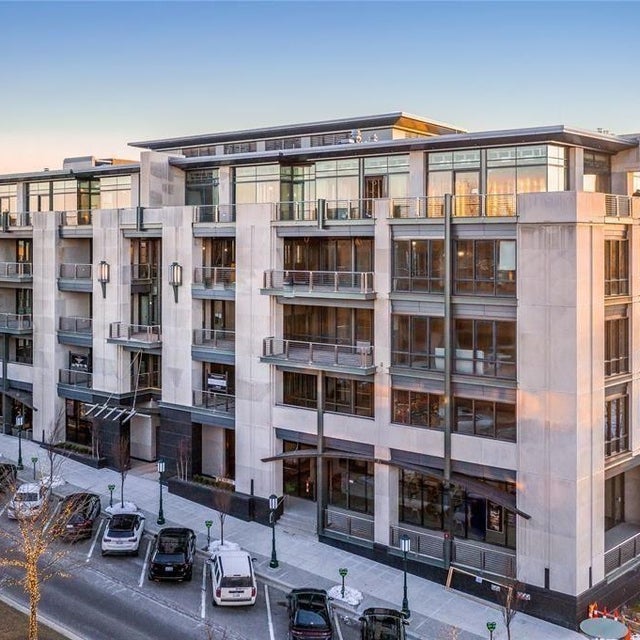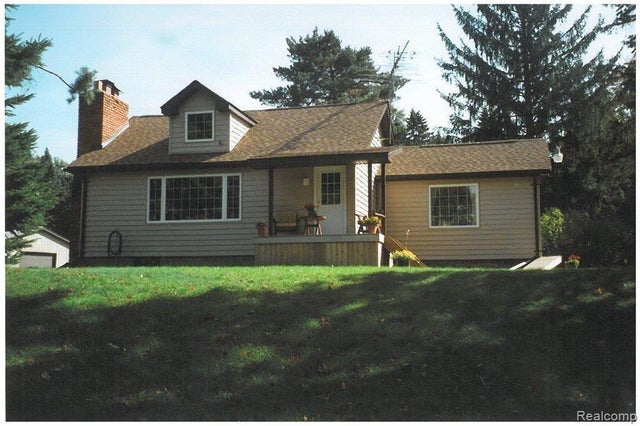Are you looking to sell your Metro Detroit home for top dollar? Making the right improvements before listing can significantly boost your property’s value and even speed up the sale. From downtown condos and suburban single-family houses to historic Detroit properties and luxury estates, strategic renovations can yield impressive returns when done wisely. In today’s 2024–2025 market, sellers have a golden opportunity to capitalize on high-ROI upgrades – but it’s crucial to focus on projects that buyers truly value. Below, we break down the top renovations (with recent ROI data) that increase home value across Metro Detroit, along with expert guidance on how to maximize your investment on each.

Curb Appeal & Landscaping: First Impressions with High ROI
When it comes to resale value, first impressions are everything. It’s no surprise that many of the highest-return projects are exterior upgrades that boost curb appeal. A small upfront investment in your home’s facade and landscaping often pays back nearly every penny – or more – in added value. For instance, replacing an old garage door (typically a few thousand dollars) can recoup about 149% of its cost on average in Metro Detroit. Even nationally, recent data shows garage doors topping 194% ROI, with a new steel entry door at 188% – the highest returns ever recorded. That means a basic upgrade like a stylish, energy-efficient front door isn’t just cosmetic – it can add more value than it costs.
Landscaping improvements are another high-ROI winner. Freshening up your lawn and entryway can dramatically enhance perceived value. In fact, a well-planned landscaping upgrade (adding plants, mulching, trimming, etc.) often returns around 95%–100%+ of your investment at resale. Think of it as essentially getting your money back while also making your home more attractive to buyers. Simple touches like planting colorful flowers, laying new mulch, or updating walkway pavers create an inviting feel that draws buyers in. “Small details like fresh mulch, a newly painted front door, or updated house numbers can make a big difference,” The Perna Team advises. We’ve seen homes with great curb appeal generate more showings and even multiple offers, because buyers fall in love before they even step inside. On the flip side, if a home’s exterior looks rough or dated, some buyers may never bother to check out the interior
Exterior Replacement Projects with Top ROI:
- Garage Door Replacement – Nearly all costs recouped (roughly 149% ROI in Detroit). Enhances appearance and signals a well-maintained home.
- Entry Door (Steel) – Over 120% ROI on average locally. A new front door boosts security, energy efficiency, and curb appeal instantly.
- Siding & Stone Veneer – New vinyl siding or manufactured stone can return 85%–100% of costs, giving an older home a fresh, modern look.
- Landscaping & Yard Cleanup – Up to 100% ROI. Green, manicured lawns and trimmed shrubs make the home look inviting (and signal pride of ownership).
Pro Tip: You don’t need a lavish garden redesign – focus on tidiness and color. Mow the lawn, remove weeds, trim overgrown bushes, and maybe plant some seasonal flowers. If the exterior paint is peeling, consider a fresh coat or at least touch-ups. These modest fixes create a strong first impression that can translate into higher offers. The goal is a move-in ready look from the curb that makes buyers say “wow” before they even walk through the door.
Kitchen Upgrades: High Return from the Heart of the Home
It’s often said the kitchen is the heart of the home – and for buyers, it’s also the heart of your home’s value. In Metro Detroit, an updated kitchen is consistently one of the most sought-after features, and it offers one of the best returns on investment for sellers. Importantly, you don’t need to gut the entire kitchen to see a boost in value. In fact, minor to mid-range kitchen remodels tend to yield the highest ROI, while ultra-expensive overhauls can over-improve for the neighborhood. Recent data backs this up: a minor kitchen remodel (e.g. updating cabinet fronts, hardware, countertops, and appliances) in the Detroit area averages about 86.7% cost recouped – meaning you get back nearly $0.87 for every $1 spent, which is excellent. By contrast, a major upscale kitchen renovation (custom cabinets, high-end appliances, etc.) might recoup only ~36%–43%. The takeaway: focus on cost-effective kitchen upgrades that make a visual impact, rather than pouring money into a chef’s kitchen that overshoots what buyers in your market will pay.
What are the best-value kitchen updates? The Perna Team has found that buyers swoon for a “move-in-ready kitchen” and will often pay a premium for it. You can achieve this without a full remodel. For example, refacing or painting cabinetry, updating the hardware, and adding a modern backsplash can make old cabinets look new for a fraction of the cost of replacement. Swapping out outdated light fixtures for stylish, energy-efficient ones is another budget-friendly win. If your appliances are mismatched or aging, consider replacing them with stainless steel or energy-efficient models – buyers love seeing new appliances included. Durable stone countertops (granite or quartz) are highly popular and instantly give the kitchen an upscale feel; if you have old laminate counters, upgrading to quartz could significantly increase buyer interest. Even a simple refresh like a coat of neutral paint and decluttering the countertops can brighten the space and make it feel larger.
From our experience, “many house hunters will overlook other dated areas if the kitchen wows them”. We recently saw this with a Bloomfield listing: the home had an older floor plan, but the seller had fully renovated the kitchen in 2021 with new cabinets, quartz counters, and smart appliances. Buyers walked in and fell in love with the kitchen – we received multiple strong offers, even though other parts of the house were more modest. The updated kitchen gave buyers confidence that the home was well-cared for and move-in ready. National surveys affirm this trend – about 60% of buyers (especially baby boomers) say they prefer an upgraded kitchen in a home. So investing in your kitchen can truly pay off when it’s time to sell. Just remember to keep the upgrades in line with your home’s value – a $15K renovation in a starter home can make sense, but a $100K luxury kitchen in a mid-priced home likely won’t see a full return.
.png)
Bathroom Remodels: Modern Touches, Reliable Returns
Bathrooms are another key area where smart upgrades can boost your home’s value. Much like kitchens, buyers value clean, modern bathrooms – but you don’t necessarily need to build a spa-like retreat to impress them. Often, a midrange bathroom remodel (updating fixtures, vanity, flooring, and lighting) yields a strong ROI without the excessive cost of a luxe overhaul. In Metro Detroit, a standard remodel of a 5x7 hall bathroom (new tub, tile surround, toilet, vanity, etc.) sees about a 70% return on investment on average. That’s in line with national trends, where bathroom renovations typically recoup roughly 60%–65% of costs for owners at resale. However, if you go ultra high-end – say, expanding the bathroom, moving plumbing, custom tilework, high-end fixtures – the ROI drops sharply (often only ~40% back). For most sellers, it’s better to aim for appealing but cost-conscious updates in the bathroom, rather than a top-to-bottom luxury remodel right before selling.
High-impact bathroom upgrades that buyers love include replacing an old vanity with a new double-sink vanity (if space allows) or a stylish pedestal sink in smaller baths. Updating to a frameless glass shower door or new tile surround can make an ordinary bath feel more upscale. Even simply installing modern light fixtures and mirrors, updating towel bars, and re-caulking or re-grouting the tub can freshen up the space at minimal cost. Don’t overlook the power of a good deep clean – sparkling clean grout, glass, and porcelain go a long way to signal a well-maintained bathroom. “Homeowners don’t need to completely remodel their bathroom to make it look as good as new to a potential buyer,” notes one home improvement guide – freshening up key surfaces and fixtures can still yield a 70% ROI or more. In other words, small upgrades = big impression in bathrooms.
Think about what comparable homes in your area offer. If most nearby listings have updated baths and yours is still sporting 1990s brass faucets and vinyl flooring, a modest renovation will help your home compete. On the other hand, if you’re in a historic home with a claw-foot tub, you might refinish it rather than swap it out – preserving a charming feature while updating around it. The Perna Team often advises sellers to focus on cosmetic improvements like fixtures, paint, and lighting in bathrooms unless the existing layout or condition is truly a deterrent. These tweaks are affordable and tend to deliver a solid return. Ultimately, a bright, clean, and modernized bathroom (or two) gives buyers one less thing to worry about and adds tangible value to your home’s appeal.
.png)
Basement Finishing: More Living Space, More Value
In Michigan, having a finished basement is almost like a secret weapon for adding value to a home. That additional living space can function as a rec room, home theater, office, or guest suite – and buyers absolutely love the extra square footage. Finishing or updating a basement is generally a mid-to-high ticket project, so you’ll want to weigh the costs against the benefits if you’re doing it purely to sell. On average, finishing a basement returns about 65%–70% of the project cost in added resale value. In other words, if you spend $30,000 finishing your basement, you might expect the home’s sale price to go up by about $20,000. While that means you won’t recoup every dollar, the investment can still be worthwhile because a finished basement greatly broadens your buyer pool and can help the home sell faster (and for closer to asking price). In fact, renovation experts note that finishing a basement significantly boosts resale value, and our team has observed this in practice: listings with a nicely done basement (especially one featuring a bathroom or wet bar) tend to get higher offers and sell faster than those without. Buyers often walk downstairs and immediately start imagining a home theater, playroom, or man-cave – it’s an emotional hook that can set your home apart from others.
That said, it’s important to be strategic. If you already have a finished basement, make sure it shows well – declutter it, add good lighting, and perhaps stage a portion as a cozy living area so buyers appreciate the usable space. If your basement is unfinished, consider whether a partial finish or basic improvements could add value without the full expense. Sometimes, simply painting walls and floors, sealing any moisture issues, and staging an unfinished basement with a rug and some furniture can help buyers see the potential. Fully remodeling the basement right before a sale is a big undertaking; as one of our real estate experts cautions, “major projects like… finishing a basement right before selling… rarely recoup their full cost in the sale”. In other words, do it if it will significantly improve marketability (for example, if homes in your price range expect a finished basement), but avoid over-customizing it. Keep the design neutral and functional – think open play space or simple extra bedrooms/bath, rather than highly personalized hobby rooms. This way, you’ll maximize the appeal to the greatest number of buyers.
In Metro Detroit’s market, a well-done basement can be a key selling point, especially in family-oriented suburbs. We often hear buyers exclaim things like, “This would be perfect for a home theater!” when touring a great basement. By presenting that bonus space as a blank canvas for fun or work, you’re effectively adding usable square footage in buyers’ minds, which boosts your home’s value perception. Just remember to fix any basement maintenance issues (leaks, cracks, mildew) before finishing or showing the space – a dry, clean basement is the foundation (literally) of any successful renovation down there.
Energy-Efficient & Essential Updates: Invisible Upgrades That Pay Off
Not all value-adding upgrades are flashy. Some of the best investments you can make are in the home’s fundamentals – the roof, windows, heating/cooling systems, and overall energy efficiency. Buyers might not gush over a new furnace the way they do over a designer kitchen, but they definitely appreciate knowing that the home’s critical systems are modern and reliable. In fact, today’s buyers are increasingly energy-conscious. Surveys show over 83% of buyers want energy-efficient windows and similar “green” features in their homes. Many formerly “bonus” upgrades – like a smart thermostat, LED lighting, or extra insulation – have become mainstream expectations for a well-maintained home. The good news is that these improvements can add value and appeal, especially if your home’s major components are older. The caveat: purely in dollar terms, the ROI on some big-ticket replacements (like a roof or HVAC system) tends to be moderate – but doing them can prevent value loss from a bad inspection or buyer hesitation.
Let’s talk numbers: a new roof typically recoups around 45%–60% of its cost in added value. That might sound low compared to cosmetic projects, but consider the alternative: if your roof is leaking or near the end of its life, not replacing it could turn away buyers or lead to low-ball offers (or expensive concessions during inspection). Re-roofing before listing can actually protect your sale price by eliminating a negative and making your home more marketable. The same logic applies to your furnace, water heater, or AC unit – if they’re ancient, a buyer will factor replacement into what they’re willing to pay. Proactively updating these systems can make your home stand out as move-in ready. Even if you don’t get a 100% ROI in pure dollars, you often speed up the sale and avoid deal-killing issues, which is a win in itself.
There are also smaller-scale efficiency upgrades that do pay off nicely. Adding attic insulation or sealing ducts, for example, often has a high ROI – sometimes over 100% – because the projects are relatively inexpensive yet appeal to buyers looking for lower energy bills. Replacing old single-pane windows with new double-pane Energy Star windows can fetch about a 60%–70% return and significantly improve comfort; plus, you can feature “new windows” in your marketing, which instills confidence. Even installing a smart thermostat and advertising it in your listing shows buyers your home is up-to-date. In Royal Oak and similar markets, “quality upgrades are expected: think energy-efficient windows and reliable mechanical systems (furnace, AC, roof) because nobody wants surprise repairs after move-in”. In short, eliminate the headaches for buyers. A home that’s energy-efficient and mechanically sound will command stronger offers than one with looming maintenance issues.
Key “Invisible” Upgrades to Consider:
- New Roof or Repairs – Particularly if your roof is 20+ years old. It reassures buyers (and lenders) and prevents inspection troubles. While ROI is ~60%, it can save the sale.
- Window Replacements – Modern vinyl or wood windows improve aesthetics and energy savings (ROI roughly 65% on average). Also reduces drafts – a bonus in Michigan winters!
- HVAC Upgrade – A new high-efficiency furnace/AC might not fully pay back in sale price, but it markets your home as worry-free. Old HVAC is a common buyer concern.
- Insulation & Sealing – Improving insulation (attic, walls) can be low cost and often recoups most or all of its cost. Plus, you can point to energy savings.
- Plumbing & Electrical – For historic homes, updating old wiring or plumbing won’t be visible in photos, but it adds value by preventing red flags. Buyers will pay more for a home with updated knob-and-tube wiring or a new 200-amp electrical panel, even if ROI is hard to quantify.
Remember, these foundational upgrades might not add glitz, but they preserve and enhance your home’s value. A house that’s in great structural and mechanical shape gives buyers peace of mind – and confident buyers are more likely to write strong offers. Always disclose new improvements like roofs or HVAC in your listing description; it’s a selling point that your Realtor can leverage to justify your asking price.
.png)
Renovation Strategies for Every Home Type
Metro Detroit’s housing stock is wonderfully diverse – we have everything from turn-of-the-century historic homes in neighborhoods like Indian Village and Birmingham, to sleek high-rise condos in Detroit, to sprawling new-build luxury estates in Oakland County. The best renovations for adding value can vary a bit depending on your home type and target buyer. Here’s how to tailor your upgrade strategy:
Condos & Townhomes: In a condo, you have no yard to landscape or exterior to remodel (that’s handled by the HOA), so put your focus inside. Aim for a modern, turnkey interior – new flooring, fresh paint, updated kitchen appliances, and stylish bathroom updates will go far. Condo buyers prioritize convenience and low maintenance, so features like durable hardwood or LVP flooring (instead of carpet) and energy-efficient windows that cut noise can impress. Storage is often limited in condos, so consider adding closet organizers or a built-in pantry system. Smart home features (smart locks, thermostats) can also appeal to the tech-savvy urban buyer. In short, make your unit feel move-in ready and contemporary. As one local expert notes, condo buyers tend to “prioritize turnkey modern interiors and convenience” – they want that HGTV-ready look since the space is smaller and every detail counts.
Historic Homes: If you’re selling a charming older home (1920s colonial, mid-century ranch, etc.), the goal is to preserve character while updating for efficiency and safety. Highlight and restore unique features – hardwood floors, original woodwork, classic tile – but address any functional shortcomings. Many historic Detroit-area homes have seen recent value surges, but buyers still expect certain updates. Ensure you have updated electrical and plumbing to meet modern codes (nobody wants knob-and-tube wiring or a 70-year-old sewer line). If the home is in a historic district, use appropriate materials (for example, wood window restorations or high-quality replicas) to maintain curb appeal. Consider adding modern comforts in a historically sensitive way – e.g., a tastefully renovated kitchen that suits the home’s era, or a second bathroom if the home only has one (extra bathrooms almost always boost value in older homes). You want to sell the story of the home’s heritage plus the confidence of new systems. One size does not fit all here – consult with your Realtor on which improvements add value without erasing the home’s soul. As The Perna Team advises, it’s about “marketing the character of a 1920s historic home vs. the convenience of a downtown condo” – each requires a tailored approach. Do both: preserve the charm, remove the worry.
Luxury & High-End Properties: In Metro Detroit’s luxury enclaves (think Bloomfield Hills, Birmingham, Novi, etc.), buyer expectations are elevated. These homes are often already well-appointed, but to increase value further or stand out, focus on top-of-the-line upgrades that add luxury, convenience, or uniqueness. Examples: a gourmet chef’s kitchen with premium appliances (Wolf, Sub-Zero), a spa-like master bathroom with a rain shower and soaking tub, custom walk-in closets, or high-tech home automation systems. Outdoor living spaces are big for luxury buyers – a professionally landscaped yard with a patio, fire pit, or even a pool (if it fits the neighborhood) can attract upscale buyers. Keep in mind, ROI on ultra-luxury upgrades can be lower percentage-wise, but in this segment it can help the home sell faster or at full price because affluent buyers expect top quality. Essentially, you’re meeting market expectations. Also, ensure the basics are flawless – a new high-end roof (slate, cedar, etc.), immaculate paint and flooring, and perfect maintenance records. Luxury buyers in 2025 love to see modern amenities like smart home tech, security systems, wine cellars, and LEED-certified energy features. While you should be careful not to over-customize (extremely niche features might not appeal to everyone), investing in widely-appreciated luxury upgrades will position your home as the complete package. As noted in a Bloomfield market analysis, “luxury buyers expect top-of-the-line amenities” – if your home doesn’t have them, chances are they’ll move on to one that does.
Suburban Single-Family Homes (Starter to Mid-Range): For the typical Metro Detroit house (whether a bungalow in Ferndale, a tri-level in Novi, or a ranch in Farmington Hills), the best renovations are often those already discussed: kitchens, baths, and curb appeal. Broadly, clean and well-maintained beats over-improved. Many buyers in this category are families or first-time owners who want a modern, fuss-free home but also have a budget. Focus on the high-ROI basics – fresh paint, new carpet or refinished hardwood floors, updated light fixtures, and a welcoming landscaping. Ensure the roof, furnace, and other major items are in good shape (or priced accordingly if not). One example: in Farmington Hills, ranch homes can see a big boost from even simple upgrades. “Upgrades can really boost a ranch’s value – a renovated kitchen, new roof, or finished basement can push the price upward,” especially since many buyers will pay a premium for a move-in-ready home versus one they have to fix up. In other words, doing those few key updates upfront can translate into buyers bidding higher, often more than covering your costs. Don’t worry about chasing every trend; just eliminate the dated and the deferred maintenance. A home that’s clean, updated in the key areas, and structurally sound is a home that will sell quickly in any Detroit suburb.
Maximize Your Sale Price with the Right Renovations
In a strong seller’s market like Metro Detroit 2025, every upgrade you choose (or skip) can make a difference in your final sale price and how fast your home finds a buyer. The top-value renovations – from sprucing up curb appeal and modernizing kitchens/baths to adding usable living space and improving efficiency – all serve one goal: making your home more attractive and worry-free for the next owner. The data shows that focusing on a few smart projects can deliver a remarkable return on investment (often 70%+ or even over 100% for certain fixes!). Equally important, our experience at The Perna Team proves that homes showcasing these strategic upgrades tend to sell faster and for more, whether it’s a condo that wows with a new kitchen or a colonial that impresses with its curb appeal and upkeep. By contrast, sinking money into the wrong projects – or leaving obvious issues unaddressed – can cost you time and profit.
Every home is unique, and the ideal pre-sale renovation plan will depend on your property’s condition, location, and target buyers. That’s where we can help. Not sure which upgrades will give you the best bang for your buck? Contact The Perna Team for a free pre-listing consultation. Our real estate experts will walk through your home, identify the most impactful improvements for your situation, and develop a personalized renovation strategy to maximize your home’s value. We’ve helped countless Metro Detroit sellers intelligently invest in cost-effective updates – and achieve outstanding results when they hit the market. Before you swing a hammer or hire a contractor, give us a call. The Perna Team will ensure you focus on the top renovations to increase your home’s value, so you can sell for the highest price in the shortest time. Let’s work together to make your Metro Detroit home shine and get you the ROI you deserve!
DON'T KEEP US A SECRET - SHARE WITH A FRIEND OR ON SOCIAL MEDIA!
THINKING OF MOVING TO Metro Detroit, OR LOOKING TO RELOCATE IN THE AREA? VIEW A LIST OF CURRENT HOMES FOR SALE BELOW.
Metro Detroit Homes for Sale
The Perna Team and Michael Perna are the best real estate agents in Metro Detroit and Ann Arbor. The Perna Team and Michael Perna have been hired as a real estate agent by hundreds of home owners to sell their homes in Metro Detroit and Ann Arbor.



